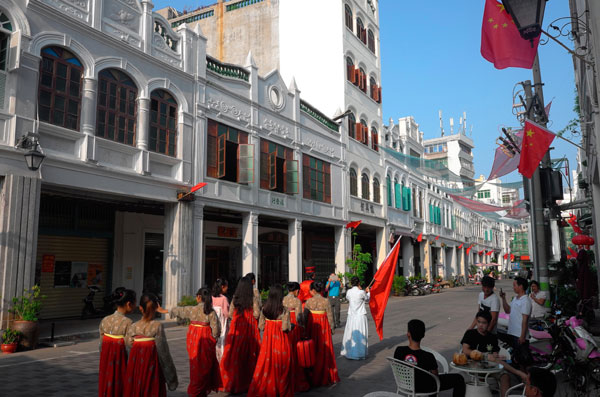 |
|
The oldest part of Haikou is regaining its former splendor as buildings lining the streets are refurbished. [Photo by Huang Yiming/China Daily]
|
Haikou used to be where Chinese from Hainan Island started their journeys to Southeast Asia to make a better living and where they plowed some of their money back as investment. Now that history is coming alive in the form of an old commercial hub in its early 20th-century enchantment, write Raymond Zhou and Huang Yiming.
The newest part of Haikou happens to be its oldest, with its decades-long wear and tear stripped away and its former glory re-emerging.
A grid formed by five streets, with about 200 sotto portico buildings occupying 25,000 square meters, is being renovated, one street at a time. Like the proverbial phoenix rising from the ashes, this district is soon to be the brightest spot when it dusts off long years of neglect.
Haikou, capital of Hainan province, was first built in the late 14th century to fend off marauding pirates. It was encircled by a 1,850-meter wall that is 5.7 meters tall and 5 meters thick with four gates and many towers.
In 1924, the wall was torn down to make room for commercial development and urban expansion. A hub gradually took shape as winding streets were lined up with shops, hotels and all kinds of retail venues. It was mostly the result of investment poured in from Chinese expatriates who had made money overseas and wanted to explore opportunities back home.
Many of them had been working and living in Southeast Asia, known as Nanyang in Chinese. The architectural style they chose was reminiscent of the prevalent style in Nanyang, which is a form of East-meets-West called qilou, or sotto portico as preferred by bilingual publicity brochures of the Haikou government.

